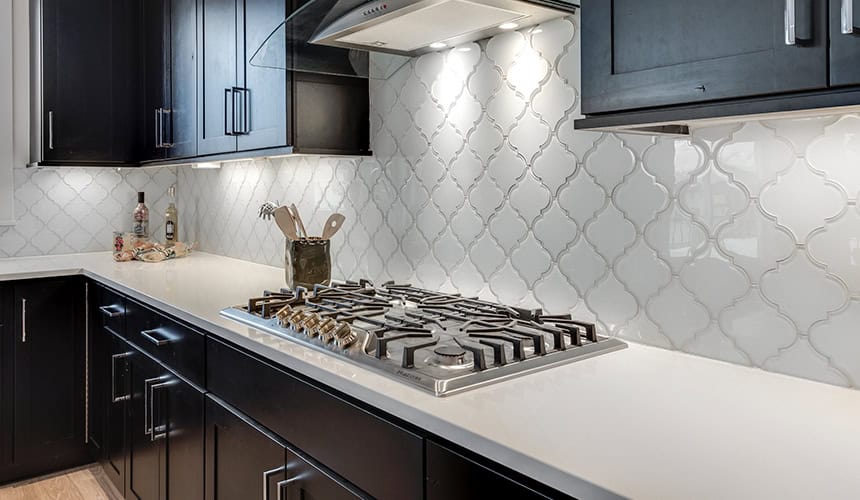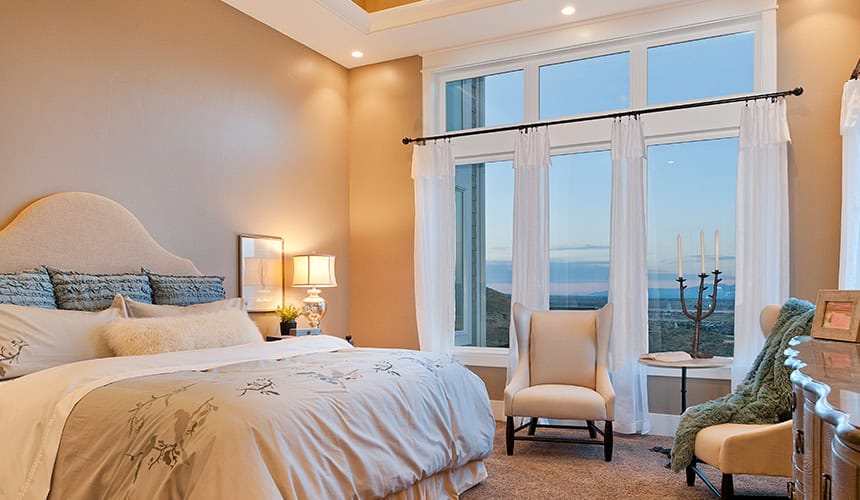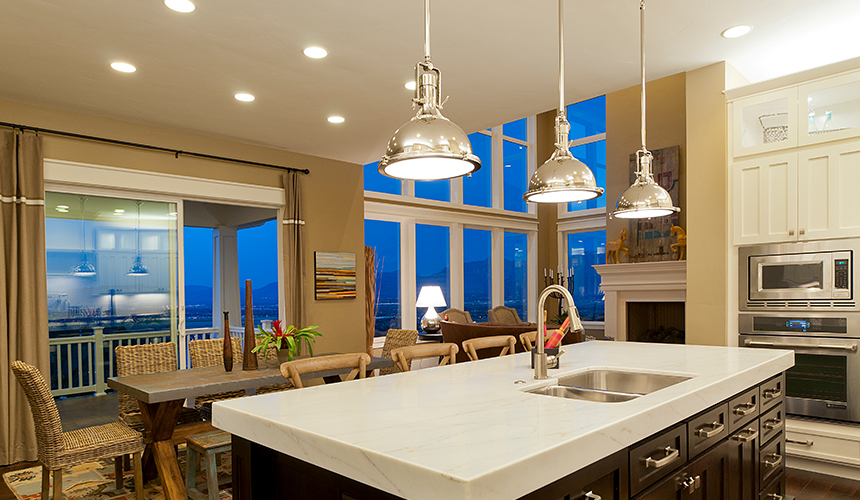How to Light Up Your Home
Just flip the switch and voilà! Light fills the room! Light is quite the phenomenon. It completely dispels darkness, gives clarity to confusion, and sets the mood in every room. It illuminates both cozy cottages on the seaside and elegant estates on the mountaintop, welcoming residents and sojourners alike. What would we do without it?
Despite its appeal, if installed improperly, light can cast creepy shadows, make your head ache, or leave you squinting. To avoid these issues, take a minute to think about the rooms in your home, and how you use them. Lighting should support the tasks you do in each room. Use these home lighting tips to fill your home with a welcoming glow.

Think beyond overhead lighting. Overhead lighting may seem like an easy way to light up a room. However, a strategically placed floor or desk lamp adds much more warmth and charm to your space. This is often referred to as layering light, or using a variety of light sources to create an inviting ambiance. Overhead lighting isn’t always strong enough to keep your eyes from working harder than needed, so using task lighting prevents unnecessary strain. Try to direct task lighting toward your most used work spaces. For example, consider a floor lamp near your reading chair, a desk lamp in your office, and under-cabinet lighting in your kitchen.

Set the mood with dimmer switches. You don’t need blinding white lights at all times of day. Dimmer switches let you easily adjust the lumens, or light output, in order to adjust lighting for the task at hand. Turn the lights bright to finish the details on your holiday craft, dim them low for a dinner party with friends, and turn them even lower for a soft glow during a movie. The number of light lumens notably transforms the atmosphere of a home, so whether you decide to use dimmer switches or not, consider each room individually as you purchase different light bulbs with a range of total lumens.

Location, location, location. The placement of your bulb will largely impact the shadows in the room and the amount of light that reaches surfaces. Pay attention to the location of your bulbs so they can shine as much light as possible! Lights should not be positioned above the edge of the counter in the kitchen or craft room, if you lean over to work, you will block the light, casting a shadow your work area. Similarly, overhead lights in the bathroom will cast shadows on your face. Instead, use sconces on either side of the mirror or a horizontal fixture above the mirror to avoid pesky dark areas. You should also consider spaces that could benefit from better lighting such as hallways, stairs, and closets. These areas tend to invite shadows which cause frustration and danger, so avoid the risk and light them up!